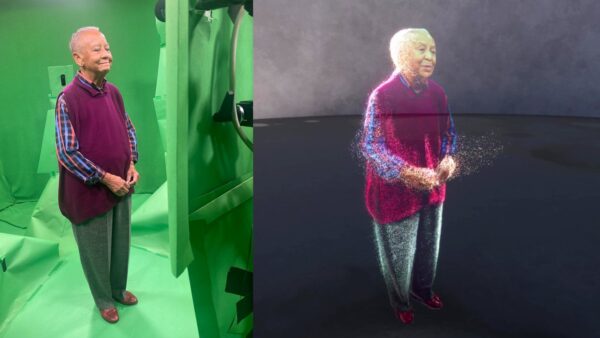Crafting Volumetric Videos
Embarking on the creation of volumetric videos involves deploying various capture techniques, weaving together existing technologies to breathe life into captivating visual experiences. Here are some prevalent methods for volumetric video capture:
Photogrammetry
Immersive 3D models are crafted by capturing multiple angles of a subject, skillfully stitched together using computational algorithms.
LiDAR Technology
The cutting-edge LiDAR technique employs laser scanning to measure and preserve scenes or structures, generating 3D scans and depth maps. It forms 3D point clouds, transcending traditional pixel representations to include depth information.
Motion and Performance Capture
Markers strategically placed on subjects, coupled with sensors and precision cameras, record the intricate 3D movements. This data is then seamlessly translated into Computer Graphics (CG) models.
360° Video Cameras
A synchronized array of cameras captures 360° video, designed for immersive experiences with 3D glasses and Virtual Reality (VR) headsets.
Light Field Cameras
These cameras gauge the intensity and direction of light in a scene, allowing users to capture an image and subsequently manipulate lighting, perspective, and focal points in post-production.
The result? Point-precise, photorealistic visualizations, enriched with depth, motion, and light dimensions, accessible across various screens and devices.
Volumetric Entertainment Unveiled
Volumetric video is not merely a technological feat; it is a game-changer reshaping various realms of entertainment, promising accelerated production timelines. A fervent advocate for integrating volumetric video in filmmaking is Diego Prilusky, former head of Intel Studios. In a groundbreaking endeavor, Prilusky oversaw the creation of a massive domed studio, dedicated to exploring the potentials of volumetric capture.
Within this studio, film set designers meticulously crafted a desert town, complete with sand, trees, and authentic landscapes. Instead of the conventional approach with a handful of large cameras, a multitude of specialized cameras recorded every nuance within the dome.
The culmination of this effort resulted in a volumetric video of the sequence, allowing viewers to navigate the scene from any angle, including the perspective of a horse, all in real-time.
This technology underwent scrutiny in collaboration with Paramount Pictures to delve into immersive media within Hollywood film production.
A Cinematic Revolution Beyond Film
While the allure of volumetric video for storytelling is evident, its applications extend beyond the realms of film and entertainment. Virtual sets are becoming commonplace not only in movies, games, and shows but also in live TV and weather studios.
Real-time game engines, championed by industry leaders like Epic Games (Unreal Engine) and Unity Technologies, have played a pivotal role in the rise of volumetric video. This has led to the democratization of game development, ushering in new techniques such as virtual production, further expanding the horizons of creative expression.
